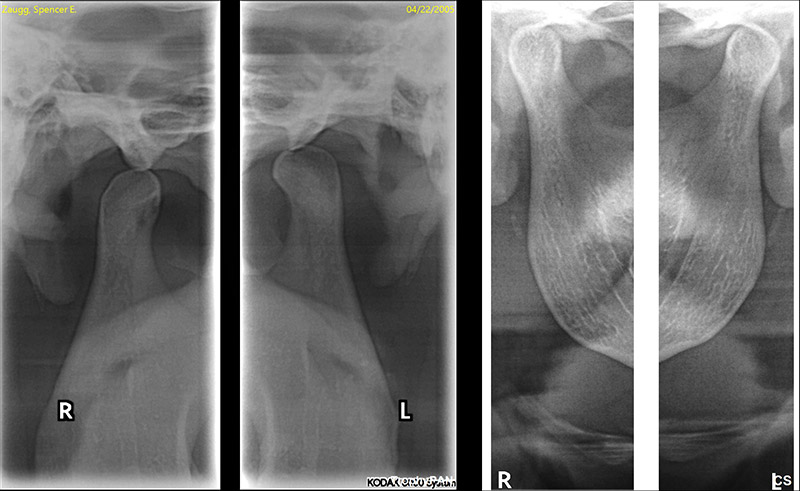
What it is:
A jaw joint problem arises when the temporomandibular joint, or “TMJ” connecting your lower jaw to the base of your skull becomes painful and is unable to function normally. People with jaw joint problems may not be able to open or close their mouths fully or chew hard, sticky foods. They may also experience painful clicking or popping when they attempt to open and close their mouth.
Many jaw joint problems are caused by the components of the TMJ changing shape and becoming unstable when the joint moves. There is a small cushioning disc that sits between your jaw bone and the base of your skull that is held in place by a supporting ligament. Sometimes the ligaments holding this disc become stretched and the disc pops out of place; either in front of the jaw bone or behind it.
Management:
If your experienced pain or discomfort in your temporomandibular joint, or “TMJ” you should have your individual risk factors evaluated by Dr. Zaugg. An appropriate management protocol can then be customized for you. Your Jaw Joint Management Protocol has important steps that you must carry out on your own to decrease your risk of future jaw joint problems.
Management Protocol may include:
- Treating an unbalanced or uneven bite
- Manage tooth grinding
- Decrease stress to the jaw by using
- Oral splints
- Medication
- Lifestyle counseling
- Increase jaw mobility through
- Jaw exercises
- Medication
Things to Remember:
Choosing to ignore a jaw joint problem may lead to chronic, debilitating pain and an inability to function normally when chewing and speaking.


